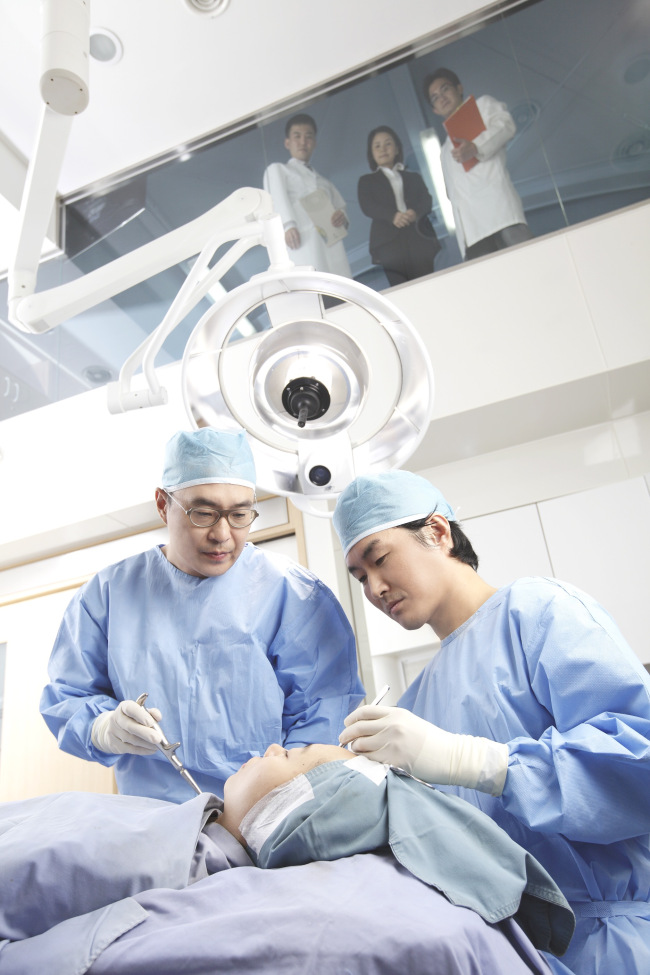While the passion for beauty never dies, the standard of what is beautiful has changed over time.
Traditionally in Korea, big eyes with double eyelids and a pronounced nose used to be the typical standard of beauty. While this is still common, the interest has recently moved on to having a so-called “V-line face,” referring to a narrow jawline that resembles the shape of the letter V. In both surgical and nonsurgical ways, women attempt to reduce the size of their face and make them more oval.
“These days, many people are interested in reducing the size of their face and making it closer to the shape of a V, which is thought to help them look youthful,” said a plastic surgeon who wished to remain anonymous.
To create the V-shaped look, doctors have introduced facial contour surgery and double-jaw surgery in addition to the traditional jaw surgery.
The facial contour procedure focuses on cutting away parts of the cheekbone and jaw in order to make the overall facial shape look smoother. The double-jaw surgery cuts each side of the jawbone to shorten its length, thereby making the face appear smaller.
In addition to the bone-cutting procedures, many also opt for nonsurgical ways to temporarily reduce the size their faces, such as through Botulinum toxin type A injection, commonly known as Botox. The Botox injection temporarily paralyzes the muscles, thereby reducing the muscles’ size for a few months. It is commonly used for jaws.
Such bone-cutting jobs and nonsurgical methods have also attracted many foreign tourists, especially those from China, who visit Korea for plastic surgery.
As of 2013, over 211,000 visited the country for medical tourism, with more than 26 percent of them being Chinese, according to government data. This is a tenfold increase from 2009.
Last year, plastic surgery clinics across the country earned over 125 billion won ($105 million) from foreign patients, according to the Health and Welfare Ministry.
Along with the usual interest in eye and nose jobs, many Chinese have shown interest in surgeries related to facial size, as well as repeat operations, industry insiders said.
“Over 70 percent of our Chinese patients are people who are discontent with surgery that they had in China. The most common complaints are the unsatisfactory design of double-eyelids and nose function problems that were caused by an unprofessional nose job,” said overseas marketing director Johnny Chung at Dream Plastic Surgery in Seoul.
 |
source: Dream Plastic Surgery |



![[Today’s K-pop] Blackpink’s Jennie, Lisa invited to Coachella as solo acts](http://res.heraldm.com/phpwas/restmb_idxmake.php?idx=644&simg=/content/image/2024/11/21/20241121050099_0.jpg)



